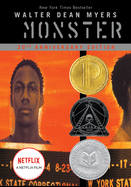This post was originally published in Nick Glass’ monthly column for Curriculum Connections, an e-newsletter published by School Library Journal in partnership with TeachingBooks.net. Subscribe to this free newsletter here.
According to ALA/AASL, “Standards for the 21st-Century Learner“ offer vision for teaching and learning to both guide and beckon our profession as education leaders. They will both shape the library program and serve as a tool for library media specialists to use to shape the learning of students in the school.”
The American Association of School Librarians (AASL) standards guide the lessons we create to help our students become successful 21st-century learners. These criteria—reaffirmed this fall at the biennial AASL conference in Minneapolis—underscore the vital role that school librarians play in assisting students gain, apply, share, and enjoy knowledge in the digital age.
In this post, we’ve aligned a few multimedia activities related to authors and books with the four main criteria found in the Standards for the 21st-Century Learner (ALA, 2007). We hope that these examples and correlations to the standards help school librarians enliven and directly support their school curriculum.
1) Inquire, think critically, and gain knowledge.
Students can develop research questions by selecting a book and conducting their own author study. For example, they might ask, “Who wrote my favorite book, Scaredy Squirrel (Kids Can, 2006)?” Their study can include a viewing of this original TeachingBooks.net movie made with author/illustrator Mélanie Watt.
This example supports many of the standards, including
1.1.1 – “Follow an inquiry-based process in seeking knowledge…and make the real-world connection…” and
1.1.6 – “Read, view, and listen for information presented in any format (e.g., textual, visual, media, digital) in order to make inferences and gather meaning.”
2) Draw conclusions, make informed decisions, apply knowledge to new situations, and create new knowledge.
Enable students to learn for themselves how Walter Dean Myers’s research in prisons and courthouses informed the story and characters in his award-winning novel Monster (HarperCollins, 1999). Here Myers talks about his research and reads from his book.
This example supports many of the standards, including
2.1.1 – “…applying critical-thinking skills…to information and knowledge in order to construct new understandings, draw conclusions, and create new knowledge” and
2.3.2 – “Consider diverse and global perspectives in drawing conclusions.”
3) Share knowledge and participate ethically and productively as members of our democratic society.
Encourage colleagues to engage in inquiry-based online research and to develop personalized plans for infusing multimedia into their school’s reading initiatives. This self-paced professional development module was created by TeachingBooks.net to assist teachers in locating and using materials that meet the diverse reading needs in all of their classes.
This example supports many of the standards, including
3.1.1 – “Conclude an inquiry-based research process by sharing new understandings and reflecting on the learning” and
3.3.1 – “Solicit and respect diverse perspectives while searching for information, collaborating with others, and participating as a member of the community.”
4) Pursue personal and aesthetic growth.
Peter H. Reynold’s The Dot (Candlewick, 2003) portrays the journey of a young artist who follows her personal and aesthetic vision. Use the related lesson plans and video book readings provided to spearhead a discussion about students’ passions and pursuits.
This example supports many of the standards, including
4.1.3 – “Respond to literature and creative expressions of ideas in various formats and genres” and
4.3.2 – “Recognize that resources are created for a variety of purposes.”
View the PDF of the AASL presentation by Nick Glass of TeachingBooks.net and Heather Jankowski of Cypress Fairbanks ISD titled “New Strategies Using Online Multimedia Materials to Strengthen Readers’ Connections to Books” that references the Standards for the 21st-Century Learner and the work of school librarians.
 Posted by Nick Glass, Founder & Executive Director of TeachingBooks.net
Posted by Nick Glass, Founder & Executive Director of TeachingBooks.net





Leave a Reply